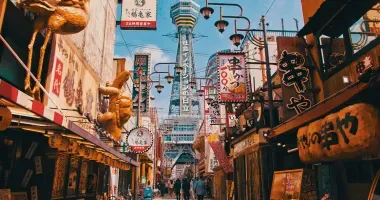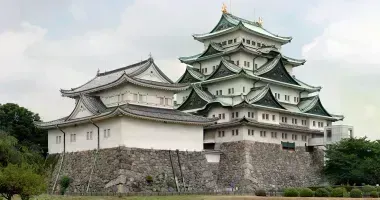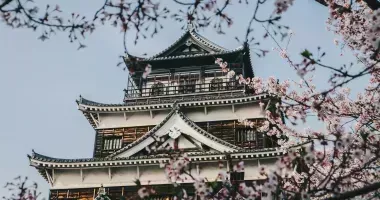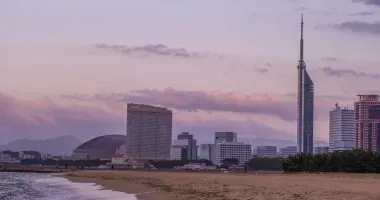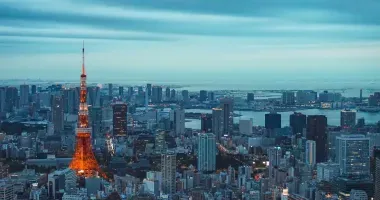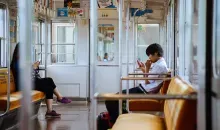The Nozomi Shinkansen 新幹線 のぞみ号
The Nozomi Shinkansen: all about the fastest super-express bullet train
The Nozomi is the super-express bullet train service on the Tokaido Shinkansen Line, faster than the Kodama and Hikari services, and is the only shinkansen service not fully covered by the Japan Rail Pass, as it requires a supplement fee.
All about Japans fastest super-express bullet train!
Japan Railways: Nozomi Shinkansen Train 新幹線 のぞみ号
The Nozomi (Japanese for "Hope" or "Wish") is Japan's fastest bullet train, being the super-express service on the Tokaido/Sanyo Shinkansen that runs between Tokyo and out west to Kyushu.
The most important stops
The super-express Nozomi stops at fewer stations on the Tokaido/Sanyo Shinkansen than the other two kinds of Shinkansen: the express Hikari, and the stop-at-every-station Kodama.
There are 35 stations from Tokyo Station (the first station on the Tokaido line) to Hakata Station (the last stop on the Sanyo Shinkansen Line), and those Nozomi trains that run the full length stop at 12 of them.
11 of those 12 stations are always the same (Tokyo, Shinagawa, Shin-Yokohama, Nagoya, Kyoto, Shin-Osaka, Shin-Kobe, Okayama, Hiroshima, Kokura, Hakata) with the remaining station being one of the following four: Himeji, Fukuyama, Tokuyama, or Shin-Yamaguchi Station in Yamaguchi. Note that the Nozomi bullet train does not stop at Shizuoka. The Nozomi Shinkansen is the fastest train on the Tokaido Shinkansen Line and runs from Tokyo to Osaka, also stopping at Kyoto, Nagoya, and other cities and stations along the way.
Compatibility with the JR Pass
Unfortunately, the Nozomi is the only Shinkansen train service not fully covered by the Japan Rail Pass, instead, entailing an additional charge depending on the departing and arriving stations. This can be both confusing and inconvenient for travelers, however, there are workarounds for traveling with the JR Pass that forego the use of the Nozomi Shinkansen if they do not wish to pay additional fees on top of their rail pass - such as relying on the other types of available Shinkansen. However, rest assured that the express service may be worth the extra fare to some travelers in many situations.
If you are trying to travel on the Sanyo Line part of the Nozomi train that goes into Western Japan, you can transfer trains at Shin-Osaka Station and instead take the Sakura Shinkansen (included with the JR Pass) for the remainder of the trip while still using your JR Pass.
The different types of Nozomi Trains
There are four models of Nozomi currently running: the 300-, 500-, 700- and N700 series. The N700 series is the latest, and has electrical sockets in all Green Car seats, and in the window seats and end-of-car seats of the ordinary cars. The N700 Nozomi trains also have Wi-Fi on the Tokaido Line section.
The Nozomi achieves speeds of up to 285 km/h on the Tokaido Shinkansen Line (i.e., Tokyo to Nagoya) and 300 km/h on the Sanyo Shinkansen Line (Nagoya to Hakata).
Some typical travel times on the Nozomi:
- Tokyo to Nagoya: about 1 hour and 40 minutes
- Tokyo to Kyoto: about 2 hours 20 minutes
- Tokyo to Shin-Osaka: about 2 hours 35 minutes
- Tokyo to Hiroshima: about 4 hours
- Tokyo to Hakata: about 5 hours 15 minutes.
Frequency of trains
Going west, a Nozomi train departs Tokyo station about every 10 minutes. Going east, a Nozomi train departs Hakata station about every 15 to 20 minutes. However, not all Nozomi services start from Tokyo or Hakata, and many go only as far as Shin-Osaka, i.e., traversing only the Tokaido or the Sanyo Shinkansen Line.
Fare for the Nozomi Shinkansen
Without the Japan Rail Pass, here is a listing of usual fares for common trips with the Nozomi Shinkansen when purchasing individual, one-way tickets:
- Tokyo > Kyoto: 14,834 yen
- Tokyo > Shin Osaka: 15,446 yen
- Tokyo > Hiroshima: 18,012 yen
- Shin-Osaka > Hiroshima: 9,692 yen
- Shin-Osaka > Hakata: 14,455 yen
For those who are using a Japan Rail Pass, as, previously stated, the Nozomi Shinkansen can be ridden, but with an additional surcharge depending on departing and arriving stations. The most popular routes with their subsequent fares are as follows:
- Tokyo > Kyoto: 4960 yen
- Tokyo > Shin Osaka: 4960 yen
- Tokyo > Hiroshima: 6500 yen
- Shin-Osaka > Hiroshima: 4,170 yen
- Shin-Osaka > Hakata: 4,960 yen
For return Nozomi rides, there is a small discount available if the one-way ride is 601 km or more but, if you don' t have a Japan Rail Pass, long-distance travel in Japan is usually cheaper by airplane than by Shinkansen, but it's less practical andd it's also less environment-friendly. The Shinkansen remins the best choice, as it simply offers the convenience of easy access to your means of transport by way of an inner-city station without having to go via an often out-of-the-way airport and, in the case of the Nozomi super-express Shinkansen, of getting there faster than the Hikari express and Kodama Shinkansen that stop at every station.





